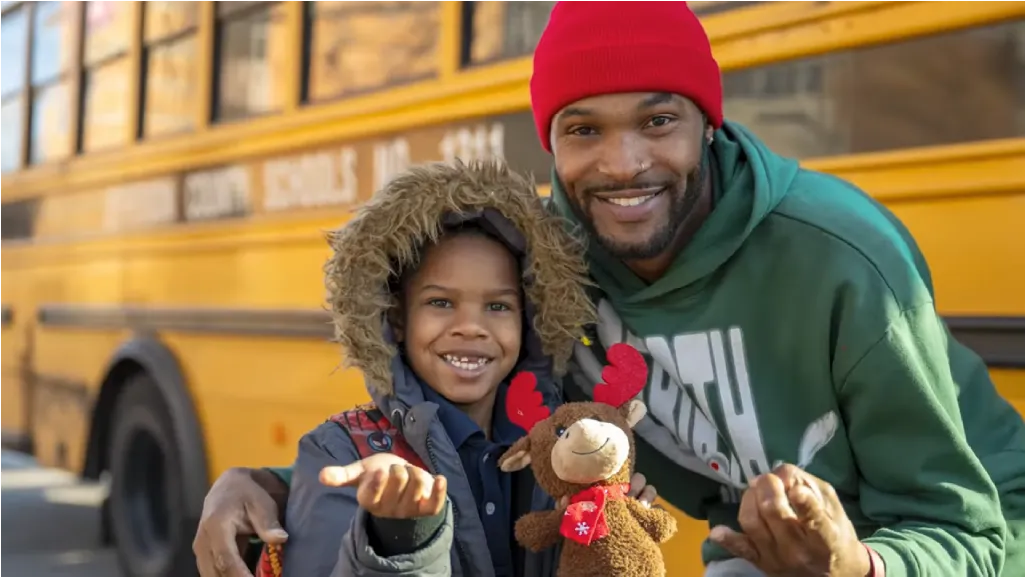This Too Shall Pass
How to Communicate Through Tough PR Situations

If it hasn’t happened to you yet, it’s bound to happen at some point. Someday—whether due to a scandal, a controversy, or even a simple mistake—your district will face bad publicity. These situations demand attention from several different angles: communicating honestly with your community, interfacing with the media, making the problem right when necessary, and rebuilding trust in your district. That’s a lot to manage, even for a seasoned professional.
The way you handle bad publicity depends on what precipitated it, but a few overarching principles can help guide you through any situation. We spoke with three school comms professionals about tough school PR situations they’ve experienced and how they made it to the other side. Some of the circumstances we’ll address are, admittedly, really uncomfortable to talk about—things like employee misconduct and racism—but that’s exactly why we have to talk about them. These situations won’t blow over on their own, and ignoring them will only add fuel to the fire. You have to face them head-on—and that’s exactly what these comms pros did.
Be as proactive as possible.
It was just three hours before a public school board meeting when Public Information Officer Jared Revlett learned the news. The superintendent of his Kentucky district, Owensboro Public Schools, was under investigation by the state police for an inappropriate relationship with a student in another district. That night the board would vote to suspend him with pay—the necessary first step toward terminating his contract.
Needless to say, this came as a shock to Revlett. “We had worked closely together for a long time, but I had also known the guy for 20-plus years,” he says. “He encouraged me to take this job when I applied for it. He was a personal friend.” Just the night before, Revlett had been coaching the superintendent through the talking points of his graduation speech. That would be the last time they ever spoke.
Owensboro’s board had been notified of the investigation a few days before the public board meeting, but they hadn’t received any details. It was only the morning of the meeting that they’d learned what the superintendent was being investigated for. “The investigation was still ongoing,” Revlett explains. “But by then the board had enough information to know we couldn’t have this person leading our district anymore.”
With so little time, it might seem impossible to be proactive—but really, even the three short hours that Revlett had were a gift. Since there hadn’t yet been an arrest, only a handful of people knew what was coming. This gave Owensboro the crucial opportunity to control the narrative and break the news to the community themselves. So Revlett and the board spent that afternoon preparing for the board meeting as well as possible, hoping to minimize the damage.
First came the question of when in the board meeting to break the news. As part of that night’s agenda, the board would be recognizing retirees from all across the district for their years of service, meaning the room would be packed. “But we knew that 90% of the people in the room were going to leave once we got through that segment,” says Revlett. So to avoid overshadowing their retirees—or breaking the news to a larger-than-usual crowd—the board would conduct their vote to suspend the superintendent at the very end of the meeting.
Even more crucially, Revlett and the board needed to strategize on exactly how to present the news. “Normally, I’m the district spokesperson,” says Revlett, “but a matter such as terminating the superintendent is a board thing, not a district thing. This was something the board needed to be the face of.” But as the comms professional in the situation, Revlett could still help the board prepare. “I worked with the board chair on putting together talking points—what to say, what not to say, and the answers to questions that might be asked,” he explains.
The Owensboro team also wanted to be mindful of their staff—perhaps very few of whom would actually be in attendance at this board meeting. “I wanted them to hear it from us before they saw it pop up on social media or the news,” Revlett explains. “It was important to take care of our people, who were innocent bystanders in all this.” So he prepped an email that would go out to all staff the moment the board voted, giving as much information as possible and letting them know when they could expect more. He put together similar material for local newspapers and TV affiliates. “I knew as soon as it broke, they were going to call me wanting more information,” he says. Sending that information before it was even requested would save the district valuable time and effort in the long run.
Owensboro’s PR crisis wasn’t over when the board voted to suspend the superintendent—in fact, it was just beginning. But the quick and proactive way the district handled the situation at the beginning set the tone for everything that would follow. “I think the community still supported the school district because the school board moved so quickly,” Revlett explains. After months under the leadership of Interim Superintendent Anita Burnette—a veteran of the district well respected by the community—Owensboro named Dr. Wendy Duvall their new superintendent in early April. And in March, the Kentucky School Public Relations Association named Revlett their first-ever School Communicator of the Year.
“The school district’s going to go on,” says Revlett. “We’ve been here for 150 years, and that’s not going to crumble overnight. We just had to do what we could to let parents know that the moment this information came to light, the district made the decision it had to make. Now, we’re going to move forward and continue educating kids.”

Build trust before you need it.
David A. Smith knows a thing or two about crisis communications in schools. In his 20 years in school PR, he’s seen it all—from his first district losing its accreditation to a teacher being caught on video kicking a student. “I have at least half a dozen stories, things that have made international news,” he says. Now the chief communications officer for the Shawnee Mission School District in Kansas, he recently faced a particularly fraught situation: a viral video of a racially charged fight at Shawnee Mission East High School. In the video, a white-passing boy calls a Black girl a racial slur before the two come to blows.
The video is ugly and difficult to watch, and it caused a lot of pain and anger across the Shawnee Mission community. As an African-American man himself, Smith felt that pain intensely. “I would say to anybody who called, That was horrible to watch. None of us condone it. It doesn’t matter what happened or why—it was just awful,” he says. But Smith also doesn’t believe anyone can accurately judge a district based on one viral clip.
In the wake of the video, “there were a lot of projections about the work of both Shawnee Mission East High School and the system as a whole around the issues of diversity, equity, and inclusion,” Smith says. But diversity, equity, and inclusion—or DEI—is actually a huge priority for Shawnee Mission, as outlined in their community-developed strategic plan. Since 2019, the district has been executing detailed action plans aimed at “relentlessly creating a fully unified, equitable, and inclusive culture,” as their strategic plan puts it—from revising board policies to recalibrating hiring practices to implementing Deep Equity training for staff.
So like any district, Shawnee Mission had work to do around equity—but they were already actively doing that work before this incident ever occurred. “When something like this happens, a lot of people are going to make assumptions about who you are and what your work is, and that’s a challenge,” says Smith.
To combat and correct those assumptions, Smith and his team leaned on the relationships of trust the district had already built—starting with the high school’s direct community. “Generally, we want to communicate with the people who are closest to an issue, and we want that communication to come from the people with whom those people have a relationship,” he says. “This was a school incident, so we wanted the communication to the school community to come from the school—not just from the district.”
Of course, that’s not to say that Shawnee Mission East’s principal was on his own. “Whenever something happens in a school, we always tell our principals, Your job is to take care of your kids and your staff. We’ll work on the communication for you,” says Smith. Working with executive leadership, the district comms team worked with the principal to put together messaging to send out to his community. That way, families would be hearing from an administrator they already knew and trusted—not a distant figure from the central office.
Smith has spent his career building trusting relationships with local media—and when it comes to crisis communication in schools, stronger relationships help everyone to withstand the pressure. That’s a lesson he learned in his first week in his very first school communications role, when his Missouri district lost its state accreditation. At first, Smith didn’t realize he was doing anything special. He was just answering the phone when reporters called. “But I remember several reporters saying to me, We didn’t expect you to answer, let alone talk to us. The district never had before,” he tells SchoolCEO. “I figured out early that reporters have a job to do, and if you support their work, that helps build relationships and trust.”
Of course, Smith doesn’t expect local reporters to refrain from covering stories that might make the district look bad or that hold it accountable. That’s not how the news works. “But when things are hard, having those relationships can help,” he says. “A reporter who knows you and trusts you might take a slightly different angle than one who assumes you’re going to lie to them.” You’re more likely to get fair coverage—and even a chance to clarify misconceptions—from someone you have a relationship with.
The strong advocates in Shawnee Mission’s community—from staff members to families to residents—also proved deeply valuable when misinformation reared its ugly head. In response to the video, “somebody who should have known better made comments about how there weren’t any people of color in district leadership,” Smith explains. But in reality, that’s not the case. “Of course, I really didn’t want to engage in that conversation because if I did, that would just open up a whole other series of unrelated topics,” he says. But Smith didn’t have to weigh in—because the district’s advocates did. “Almost immediately, several people jumped in and said, Hey, that’s wrong. Here’s what’s actually true,” he says. “So you count on your folks, and they’ll be willing to step up for you.”
Of course, trust requires constant maintenance, especially when it comes to crisis communications in schools. You can’t just lean on the trust you’ve already built; you have to keep building and rebuilding trust with your whole community. At Shawnee Mission, this meant shining a broader spotlight on the DEI work the district is already doing. “I told my team, Let’s start talking more about what our work is,” says Smith. “It’s the same work we’ve been doing—but we need to highlight it more.”
But even more importantly, building and maintaining trust meant listening to students about what needed to happen moving forward. After all, the district still has work to do. “We talked with the principal and said, Make sure you connect with your kids,” says Smith. “They’re saying things about your building that you need to hear, and you need to make sure that you create a space for them to have those conversations. That won’t be easy, but they’ve got to feel like their voices are being heard. That’s part of the work.”

Accentuate the positive.
On the very first day of the 2023-24 school year, Jefferson County Public Schools (JCPS) in Kentucky found themselves in the middle of a transportation disaster. Just a few weeks prior, the district had lengthened bus routes in an attempt to offset their bus driver shortage. But as a result, the morning was riddled with bus delays—and in the evening, a few students didn’t make it home until nearly 10 p.m.
For Chief of Communications and Community Relations Carolyn Callahan, the first priority was to admit that the district had messed up. “That night we sent out a very honest email basically saying, This was 100% unacceptable,” she tells us. “We have to do better.” Superintendent Marty Pollio took several interviews with local media and filmed an apology video explaining what the district would do next. Then, JCPS canceled school for the rest of the week, using that time to solve the problem.
The district implemented as many short-term solutions as possible right away. They reduced the lengths of bus routes and even sent extra staff members along with bus drivers to help with directions. “One thing that we realized was that we had no way to tell parents where their kids were when they were on our buses,” Callahan says. “So parents were calling, and not only were their kids three hours late, but we couldn’t tell them where their bus was, which makes it even worse.” JCPS got a GPS tracking app up and running by the end of that week.
But despite that quick response, the media fervor has continued. “That is still the story,” says Callahan. “It is still what everyone’s talking about. Still, a couple of times a week, we are asked what we’re doing, what changes we’re making.” And massive changes are in the works for next year’s transportation plan—but those long-term fixes take time. So what could the district do in the meantime? Callahan’s answer was to accentuate the positive.
The idea was to highlight the positive stories from JCPS’s bus routes. “We wanted to call attention to bus drivers who love their jobs and highlight why they love their jobs,” Callahan says. In a series of videos, the district did just that. “We got on a bus with them, talked with them, showed them high-fiving cute kids—showed how much their kids love them,” she tells us. At many of the district’s schools, students made signs, put together gift bags, and handed out snacks and water to drivers before and after school. “So we highlighted all of that on social media and our website, too,” says Callahan.
The strategy is pretty simple; if you can’t control the narrative from the get-go, change it. “The media’s not necessarily going to tell the positive, so we have to tell our own story,” Callahan says. “We just flood our social media and our website with positive news, whether it’s on this bus driver situation or the other positive things going on in our schools. Great things happen every day inside every JCPS school—you just might not hear about them. In comms, our job is not only to protect and defend the brand, but to highlight those amazing stories.”
This too shall pass.
In each of our conversations, a common theme emerged: No matter what crisis you’re facing, it won’t last forever. “In my first communications job, my superintendent told me, Today’s news is tomorrow’s fish wrapping,” says Smith. “The metaphor doesn’t work as well now in our digital age, but the point still stands. Even when you think you’ll never get past it, you do. These things have a cycle. It’s going to be hard for a while, and then you’ll get back to some sense of normalcy.”
So if you’re in the midst of a school PR crisis, stay the course. Get ahead of the situation when you can, lean on your relationships, and never stop highlighting all the great things happening in your schools. Before long, this will all be a distant memory.

Subscribe below to stay connected with SchoolCEO!


